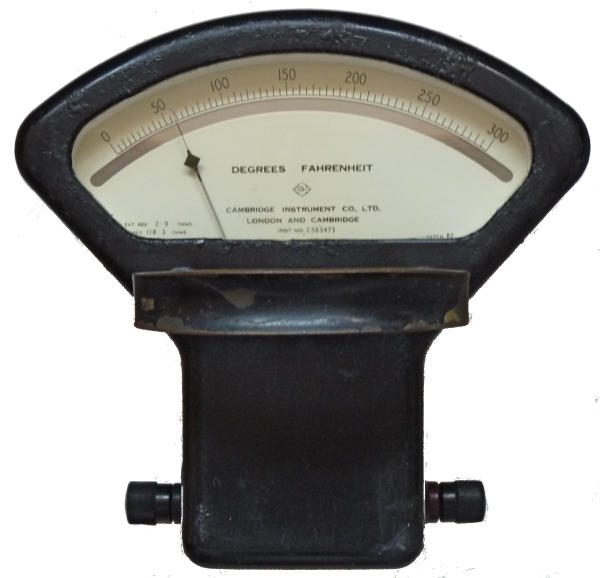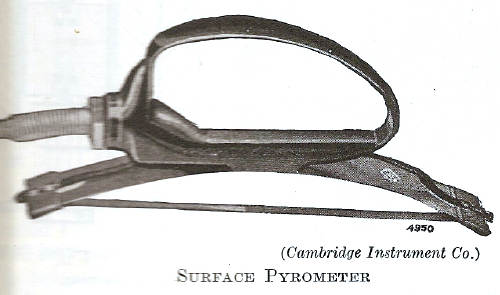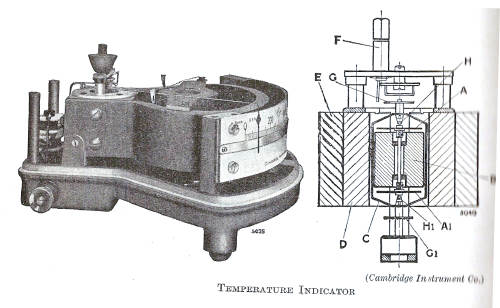
No.C-563473

Cambridge Instruments Temperature Meter 0-300 degrees Fahrenheit. meter movement 118.3 Ω, 2.9 Ω external, 450 μA to give FSD. Cambridge Instrument Company Ltd, UK, date unknown but meters of this construction were being advertised in the 1960's.
This is one of many instruments collected by Jack Davidson C Eng FIEE which I have been given by Dr Graham Winbolt
THERMO-ELECTRIC PYROMETER
This relies upon the thermoelectric effect first discovered in 1821 by T J Seebeck. He found that a current would flow in a circuit comprising junctions of dissimilar metals at different temperatures. Today we would call these junctions thermocouples.
The following pictures and description refer to an earlier model of the instrument that pictured above.

The thermo-couple takes the form of a thin strip consisting of pieces of two dissimilar metals welded together end to end. This strip is flexible and, if pressed lightly upon a hot surface such as a heated roller, it conforms to the shape of the latter and makes intimate contact with it.

The E.M.F. may be measured either directly by a galvanometer, or by a potentiometer like this one. The former is the more convenient for most practical purposes, since the galvanometer may be calibrated-for a given temperature of the cold junction-to give temperatures directly. The diagram shows the construction of an indicator manufactured by the Cambridge Instrument Co. for use with their thermo-electric pyrometers. The moving coil H of the indicator is suspended magnetically in the field of the magnet of which D is the pole block. A and A1 are iron discs, B is an iron core, G and G1 are control springs, and H and HI pivots. The magnetic suspension ensures resilience and protects the pivots against the effects of vibration.
The automatic compensator devised by Charles R Darling consisting of a spiral bi-metal strip which is attached to the needle provides an offset corresponding to the internal or cold junction temperature. This system was first incorporated in Pyrometers manufactured by Robert W. Paul Instrument Company in about 1910. Subsequently became The Cambridge and Paul Instrument Company Ltd in 1919 then Cambridge Instrument Co Ltd in 1924.
Sources
"Pyrometers and Pyrometry" Darling, Charles. R, Spon, London, 1911
"Electrical Measurements and Measuring Instruments" 2nd Edition. Golding,E.W, Pitman, London, 1935

